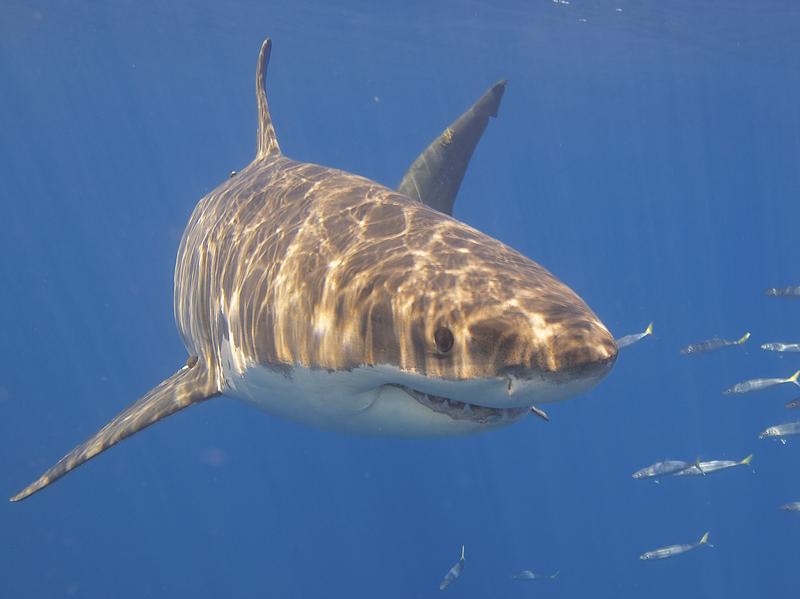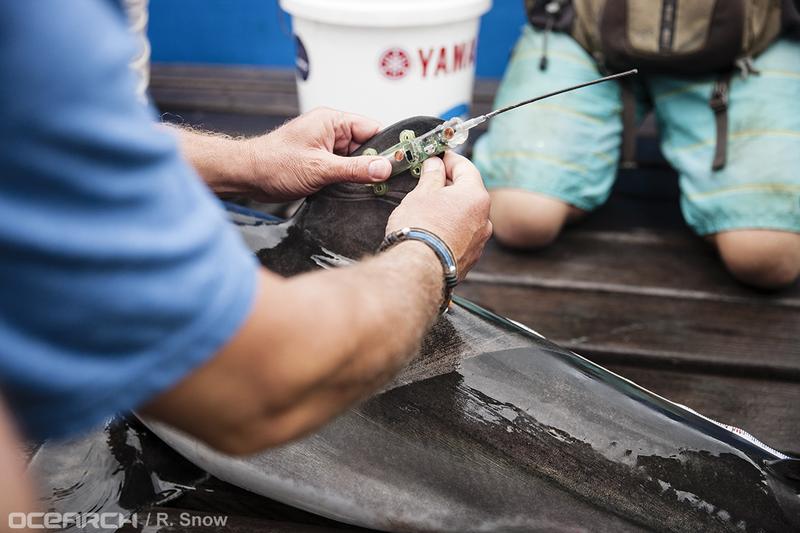
Movies like "Jaws" helped make great white sharks famous, but to scientists, the species still holds plenty of mysteries. Great white "nurseries" — areas where the animals spend the first few months of their lives — are found in other parts of the world, including in waters off of South Africa and Australia. But for years scientists had no idea where the great whites in the North Atlantic might be starting off their lives. Now, a group of marine biologists think they have finally found a nursery off the coast of Long Island.
The theory, which was tested earlier this month by a two-week expedition aboard the M/V OCEARCH, evolved from research by Tobey Curtis, a scientist at the National Oceanic and Atmospheric Administration. A few years ago, Curtis started looking through old fishing records, museum collections, and newspaper clippings dating back more than 200 years. He found that out of the entire North Atlantic, nearly all of the baby Great White sharks seen since the 19th century were found off of Long Island’s southern coast.
“There’s nowhere else along the whole Atlantic coast where four foot long white sharks are being caught, except off Long Island," Curtis said. "The juveniles seem to like these shallow areas where there’s a broad continental shelf and there’s a lot of food available."
As adults, great white can grow up to 20 feet long and weigh thousands of pounds. But when they are first born, they are only about four feet long, and their mothers have left them to fend for themselves. That means the shark pups are still vulnerable to larger predators, including larger great whites.
This year, Curtis teamed up with the shark research organization OCEARCH to find and tag as many juvenile great whites as they could in the waters surrounding Long Island. While he was hoping they would find one or two baby sharks over the course of the trip, they ended up capturing, and tagging, a total of nine. The researchers have even given them locally-inspired nicknames like Montauk, Hampton and Gotham.
Curtis and the other researchers say swimmers have little reason to fear: baby great whites are too small to go after humans, and they are still rare enough that it's unlikely anyone would come across one of them given the vastness of the ocean. Instead, Chris Fischer, the founder of OCEARCH, sees the baby great white nursery as a positive sign that the area is rich with seafood — and that the sharks are keeping it that way by eating weak and sick fish.
“You live in a special place,” Fischer says. “This is where the balance-keeper of the entire North Atlantic is born.”
The expedition not only helps prove where sharks grow up, but also will tell researchers about great whites' migration patterns. So far, the tracking devices on the tagged sharks show that they are swimming around the waters off the tip of Long Island. When the sharks get big enough to take on a longer journey this fall, Curtis, Fischer and their crew will be following to see where they go next.

